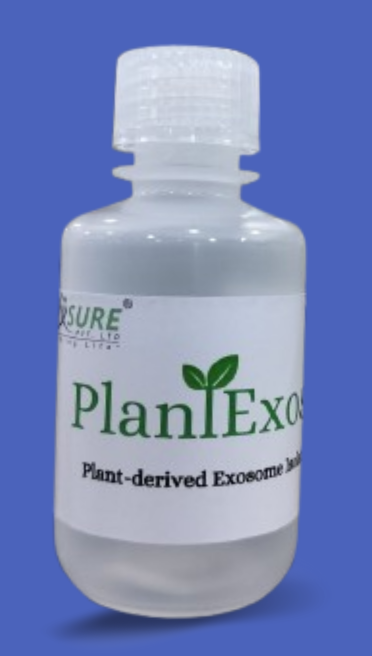
A major challenge of working with exosomes and other types of extracellular vesicles (EVs) is their characterization and agreeing on parameters that define each group. Recently, this task has become even more challenging with a dawning realization that proteins (and nucleic acids) loosely associated with the surface of exosomes, once thought to be artefacts of purification, are functionally important.
EVs are defined by a spherical phospholipid bilayer. Embedded within this layer are transmembrane proteins such as tetraspanins. Until recently, this bilayer was thought to define the outer extent of exosomes. Following purification, any proteins that attached to the surface were merely considered contaminants. However, as functionality is being assigned to these proteins in the exosome’s corona, the field is entering a “paradigm shift”.
Exosomes corona vs coronavirus
First of all, it should be pointed out (to any non-expert reader of this article) that the exosome corona is not related to coronavirus. Coronaviruses are so called because of their appearance under the electron microscope, resembling the corona of the sun. The corona seen in exosomes draws its name from the same source but is not associated with infection. Although a perfectly good name, it’s a little unfortunate that the EV field has crossed nomenclature boundaries again (see exosomes vs. the RNA exosome complex).
Origin of the corona
The concept of EV corona proteins is not new. The phenomenon of proteins attaching to synthetic particles after mixing with serum has been known for some time. However, the characterization of EV corona proteins is significantly more challenging because the EV and its corona emerge from the host organism together.
A variety of analysis techniques are being brought into play to separate and characterize the corona proteins from the rest of the EV. For example, corona proteins that originate in the serum will not be present in EVs purified from serum-free cell culture. These baseline EVs can then be mixed with serum or other biological fluids to form a serum corona for analysis.
EV corona proteins may originate both intra- and extra-cellularly. For example, for exosomes, some of the corona proteins may attach during formation within the multivesicular body (MVB). Corona decoration may also occur during secretory autophagy. For proteins that attach within the MVB, rather than added by a biological fluid, what constitutes a corona protein becomes more difficult to define.
Corona dimensions
There seems to be no accepted definition of the size of exosomes. One possible reason for this is the origin of the exosomes. Exosomes purified from cell culture lacking a corona will have a smaller size than exosomes purified from natural sources such as serum. The corona layer’s thickness is about 5 nm and has an associated hydration shell about 10-20nm thick. In total, these layers could add 50 nm to the diameter of an EV. This is about the range of different values given for exosome size.
Corona composition
The composition of the corona is likely to be influenced by the material the EV was isolated from. Urine, for example, has fewer proteins than serum. In contrast, exosomes isolated from cerebrospinal fluid (CSF) are likely to have a composition that is more closely related to serum-derived EVs given the contribution of serum to the formation of CSF. This is indeed found to be the case with proteins such as AoE, ApA1, fibrinogen and fibronectin found in the corona of EVs purified from both sources.
EVs can be washed in a biological fluid to add a corona or washed in a suitable buffer (e.g. containing proteinase K) to remove the corona. The corona plus EVs can then be compared with the corona minus EVs to identify corona proteins and assign any function. As well as using analytical techniques such as microscopy, nanoparticle tracking analysis (NTA) and ELISA, the exosomes can be analysed with and without their corona.
Corona proteins include the usual coronal proteins that also bind to synthetic nanoparticles and viruses. These include abundant plasma proteins such as apolipoproteins and immunoglobulins. Unlike synthetic nanoparticles, some elements of the corona seem to be specifically attracted by components of the EV’s phospholipid bilayer. The distribution of corona proteins is not uniform.
The proteins that bind may be similar to the large group of some 400 proteins that bind non-specifically to heparin. These include growth factors and chemokines, as well as enzymes, enzyme inhibitors, lipoproteins and others. Some of the proteins in the corona also appear to bind specifically. For example, TGF-β binds to CD63, a transmembrane protein that is one of the hallmarks of exosomes.
Corona nucleic acids?
There is increasing evidence that in addition to proteins, the corona may contain DNA, RNA and lipids. This DNA may be associated with genotoxic stress. The DNA may be chromosomal or mitochondrial in origin. It has been suggested that exosomes are removing harmful DNA fragments. So perhaps exosomes also work as the cell’s waste disposal system after all! The importance of RNA identified in the corona is not clear as RNA-binding proteins have not been identified.
The biological importance of EV coronas
The biological importance of corona proteins remains to be determined. For synthetic nanoparticles, there is evidence that the corona promotes cellular uptake. It is possible that the corona is critical for EVs biological effects. Removing the corona has been shown to abolish effects in angiogenesis and skin regeneration. Mixing with a cocktail of growth factors restored functionality.
IMAGE Bigstock




